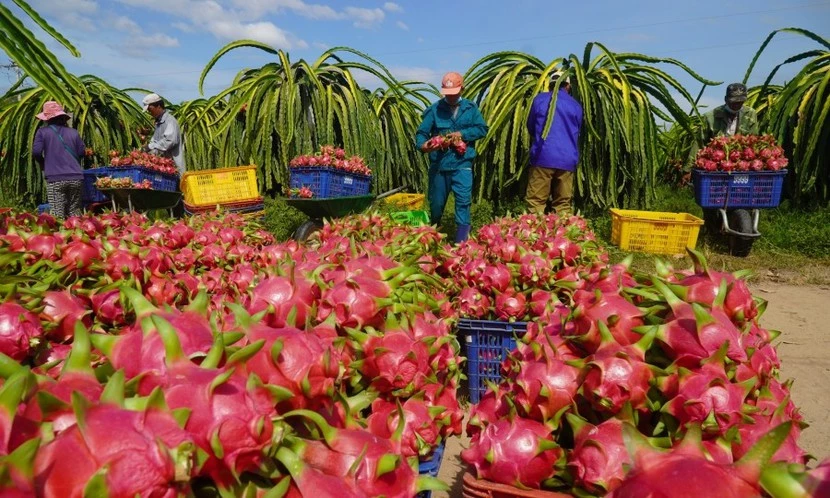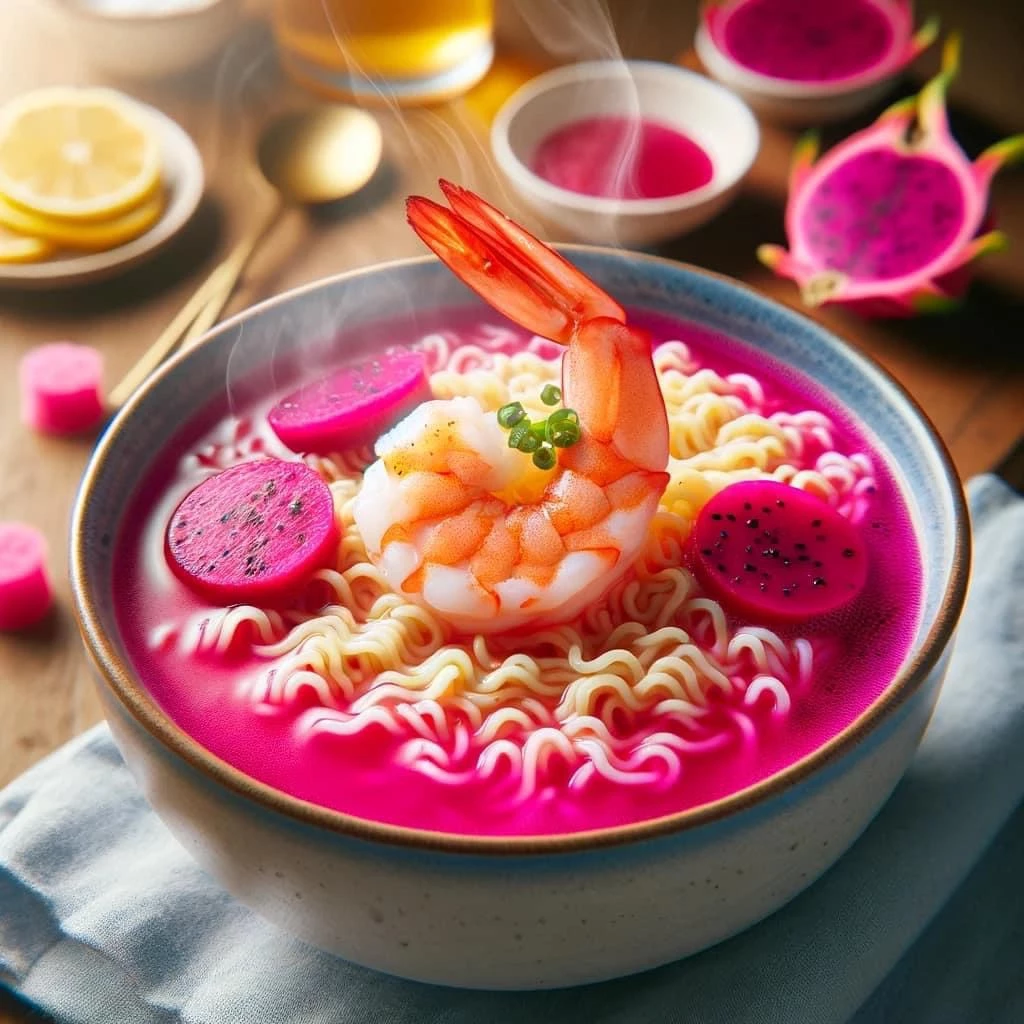


What will happen to the fate of unexported dragon fruits?
Current Situation of Dragon Fruit Export
In 2022, China announced that it had cultivated 67,000 ha of dragon fruit, with a production of 1.6 million tons, surpassing Vietnam in both area and output. They support farmers in increasing cultivation areas, diversifying products, and providing technical assistance to achieve high yields. In Tuxi and Ningbo, Zhejiang Province in east China, farmers work through the night to artificially pollinate dragon fruits to ensure a successful harvest. Farmers in this area have also expanded dragon fruit cultivation areas more than before, so dragon fruit output has increased significantly. This causes the price of red-flesh dragon fruit in Nanning, Guangxi, to be lower than Vietnamese imports.
According to a survey by Produce Report, July-August is the peak season for dragon fruit supply. In Guangxi - China's largest dragon fruit-producing area - prices have hit record lows. Red-flesh dragon fruit at a market in Nanning, the provincial capital, retails for around VND23,000/kg, while white-flesh dragon fruit imported from Vietnam costs about VND30,000/kg. In addition, dragon fruits are flooding markets across China with lower prices than Vietnamese imports.
The domestic dragon fruit cultivation surge is why China has reduced imports from Vietnam. According to Mr. Nguyen Dinh Tung, General Director of Vina T&T Import Export Company: "The export of this fruit to China and the US is no longer as effective as before because China has cultivated dragon fruit. And markets in the US, Canada, and Mexico have also started dragon fruit cultivation, limiting Vietnam's export market share in these countries."
Data from Vietnam Customs shows that dragon fruit exports reached USD40.6 million in August alone, down 20.5% year-on-year and 34% from July. In the first eight months, dragon fruit exports were USD442 million, down 4.4% year-on-year. Both white-flesh and red-flesh dragon fruit saw sharp declines in the Chinese market. In the first 8 months of 2023, dragon fruit exports of red flesh to China decreased by 36.5% and to the US by 39%.

According to Mr. Dang Phuc Nguyen, Secretary General of the Vietnam Fruit and Vegetable Association, 5 years ago, Vietnam was the leading supplier to China and Thailand. Still, recently, these countries have identified it as a main crop and are focusing on developing it into a key crop. Therefore, when domestic supplies are abundant, Vietnamese imports will be disadvantaged if quality is not significantly superior. Dragon fruit cultivation areas have increased in many regions worldwide. They are researching additional high-quality dragon fruit varieties, which puts tremendous pressure on Vietnamese dragon fruit.
"Difficulties breed resourcefulness."
In the face of many challenges in dragon fruit exports, Vietnamese people came up with the idea of processing dragon fruit noodles, creating an incredibly unique dish. "Dragon fruit noodles for the first time," this phrase has become a viral phenomenon spreading at lightning speed on social media. Producers combined dragon fruit noodles because they believe the cooling property of dragon fruit helps reduce the hotness of instant noodles, a favorite and convenient food for many.
The "hotness" of dragon fruit noodles made many social media users curious to buy and taste this noodle dish to review. Thanks to this, many shops selling this noodle dish are overwhelmed with orders or temporarily out of stock. Previously, before the emergence of dragon fruit shrimp noodles, people had passed around dragon fruit bread. Specifically, during the COVID-19 epidemic, when dragon fruit could not be exported, people initiated mixing dragon fruit into bread dough to make unique Vietnamese dragon fruit bread. This dish became a strange phenomenon at the time. With its novel flavor, the dragon fruit bread spread across the online world and received much support from people. Thanks to this, dragon fruit was consumed quickly, rescuing farmers from difficult circumstances.

Now, once again, dragon fruit has become a social media phenomenon that people eagerly search for and find. This is an encouraging sign for domestic agricultural products, helping Vietnamese fruits to rely on something other than export earnings. By combining traditional and common dishes, dragon fruit is consumed more domestically, assisting people in ensuring sales outlets and working capital.
From this, we can see that Vietnamese people are brilliant at taking advantage of available ingredients to create novel dishes, enriching our country's culinary culture. The freshness of dragon fruit blended with crispy and chewy noodles will make a bowl of noodles that delights the hearts of fans.


